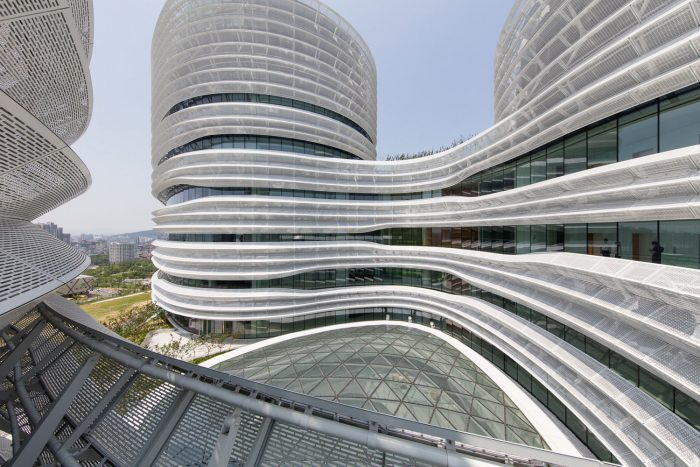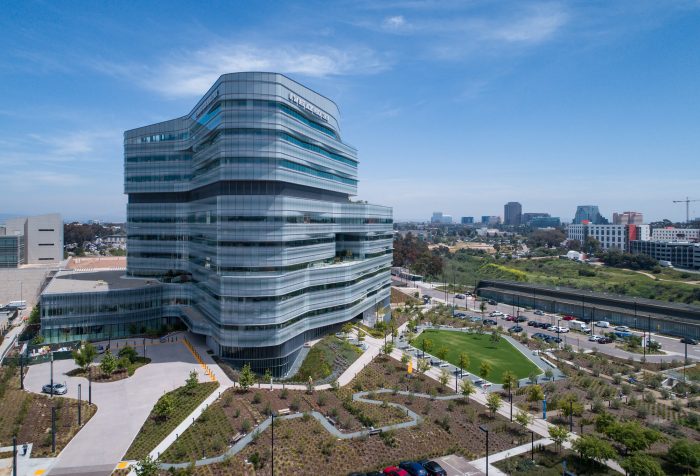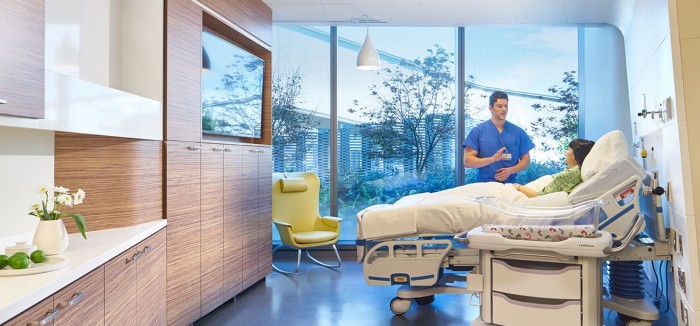We are thrilled to share that UC San Diego Health’s Jacobs Medical Center has been awarded a National Healthcare Design Award from the American Institute of Architects (AIA) and the Academy of Architecture for Health (AAH). Only seven projects received this year’s award, which recognizes the best new healthcare buildings around the world. This is the fourth AIA/AAH National Healthcare Design Award CannonDesign has won in the last seven years.

Jacobs Medical Center is the new centerpiece of the UC San Diego Health campus in La Jolla, California. The 10-story hospital functions as three hospitals in one — housing inpatient services for high-risk obstetrics and neonatal care, cancer care and advanced surgical care. Located adjacent to a new research facility, the 245-bed building is a translational medical center in the truest sense — facilitating the convergence of research, education and world-class clinical care.
According to the AIA/AAH jury, the hospital demonstrates a “consistent design vocabulary, inside and out.” The jury added that the exterior has a “feeling of fluidity that tracks all the way around the building” and that the interior “exudes a sense of calm in a spa-like atmosphere that says you are cared for here.” When reflecting on the building as a whole, the jury’s key phrase was “total design integration.”
The hospital, which welcomed its first patients in November 2016, represents one of CannonDesign’s most collaborative and research-based projects to date.

“In many regards, we pushed conventional wisdom to the side and harnessed a very data-driven approach to designing the hospital,” said Mehrdad Yazdani, design director of the Yazdani Studio of CannonDesign. “Our team interacted with 65 user groups in 80 departments, observed live surgeries, simulated procedures, and used advanced computation and modeling to create more than 60 design concepts before settling on a final option. We were fortunate to have a client that valued creative exploration, and I think the end result is testament to what’s possible when research, creativity and design collide.”
One of the more striking features of the hospital is its overall form, which was driven by the design of the patient units, but also by advanced modeling to capitalize on views, maximize daylight and minimize solar gain and glare. The geometry creates a subtle continuous flowing curve of the exterior — a dynamic shape that changes as one passes around the building’s perimeter. Integrated into the exterior are a number of elevated gardens and terraces bringing nature up to the patient level.
The organic nature of the exterior translates inside to create a natural flow. As much as possible, right angles were avoided, and the interior corridors replace typical right angles with curved corner conditions — allowing patient beds to effortlessly be pushed through the hallways. A non-denominational chapel on the first floor is also organic in nature, with seating appearing to grow from the wood floor. More than 150 works of art are incorporated throughout the facility, complementing the overall architectural design narrative by emphasizing views of nature, natural light and closeness of family.

Each of the patient rooms are equipped with modern finishes, and an award-winning custom headwall seamlessly combines all necessary elements and equipment into one sculptural element. Rooms are also equipped with an iPad that can be operated from the bedside, empowering patients to customize their environments, control in-room entertainment and order local, seasonal meals. The same devices also allow patients to see photos and biographies of their clinical care team, view their schedule of upcoming medical tests and access a bedside medical chart.
“Without question, Jacobs Medical Center ushers in a new era of healthcare design,” adds Carlos Amato, healthcare principal at CannonDesign. “I’ve been designing and planning healthcare facilities for 26 years, but this project has completely recalibrated my perspective on what’s possible. This building is the future of healthcare design. I’ve never seen anything like it before.”